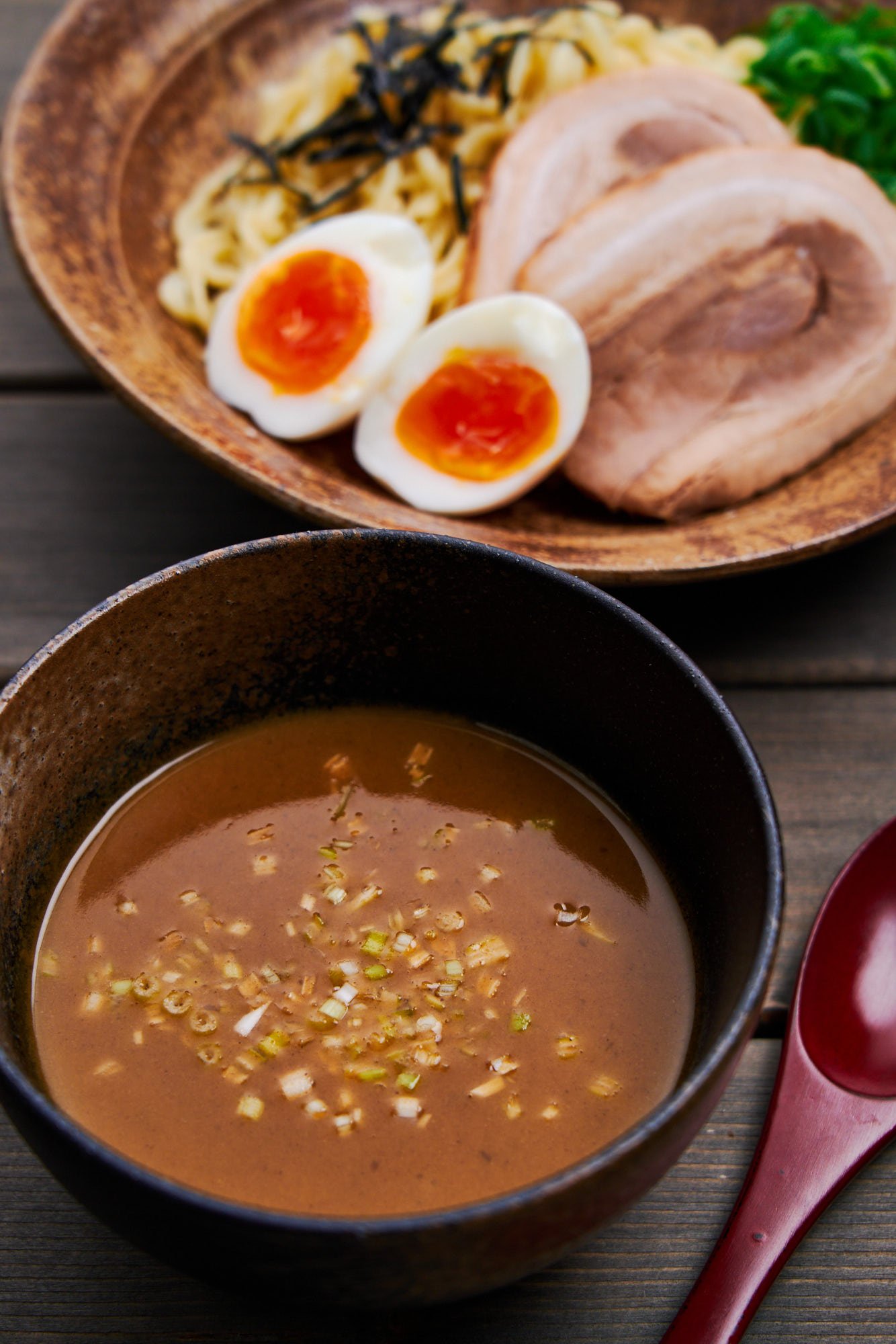
If you’re a ramen lover and you want a quick, satisfying meal, tsukemen (literally “dipping ramen”) offers a fun twist on the classic Japanese noodle dish. While traditional recipes require nearly a day of cooking to develop deep, complex flavors of the unctuous broth, my recipe employs simple science to create an authentic ramen shop tsukemen broth at home in under half an hour!
Jump to:
Tsukemen vs Ramen
The main difference between tsukemen and ramen is that tsukemen separates the components, featuring thicker noodles that are dipped into a rich, concentrated sauce before eating. A traditional bowl of ramen serves the noodles together with a lighter soup. The benefit of tsukemen is that the noodles don't get soggy, allowing you to enjoy the chewy texture of the thick noodles while customizing each bite with your perfect combination of dipping sauce and toppings.
Why This Recipe Works
- Grating the aromatics (onions, carrots, ginger, garlic) and using ground pork makes it possible to quickly brown them, creating a deeply flavorful broth.
- Baking soda raises the pH of the ingredients, which speeds up Maillard browning significantly, giving this quick tsukemen broth a rich, meaty flavor in minutes.
- Bone broth ramen gets its unctuous mouthfeel from the collagen in cartilage and connective tissues breaking downinto gelatin. Adding powdered gelatin is a faster way to achieve this texture.
- To make the rich broth even creamier, the fat and soup base are emulsified with Saikyo miso using an immersion blender.
- Powdered shiitake mushrooms and katsuobushi are added at the very end to amplify the umami of the dipping broth.

Ingredients
- Ground Pork - I love using ground pork as the base for our dipping sauce because it browns quickly and releases plenty of flavorful fat. If you're going for a lighter version, ground chicken works, but you might want to add a touch more oil to compensate for the lower fat content.
- Onion - Onions provide the foundational sweetness that balances out the savory elements in my tsukemen broth. Grating it (along with all the other aromatics) allows you to achieve caramelization much faster than chopping.
- Carrot - Adds subtle sweetness and vegetal character to the soup, complementing the earthy umami of the meat.
- Ginger - Brings a bright, aromatic warmth that cuts through the richness of the fat, giving the soup base a balanced and invigorating kick.
- Garlic - Provides a deep, savory foundation that ties all the other flavors together. I like to get the garlic nearly burnt as you get the most complexity from it.
- Baking Soda - This is my secret weapon for quick tsukemen broth. It raises the pH of the aromatics, which speeds up the Maillard reaction(the browning process that creates deep, complex flavors in the soup base).
- Chicken Stock - This is the primary liquid for this dipping sauce. I prefer chicken stock for its clean yet rich flavor, but you could use any flavorful liquid, such as pork stock, vegetable stock, or mushroom broth.
- Gelatin - This is how we cheat time. Traditional ramen broths get their luxurious silky texture from hours of cooking bones and cartilage. Adding gelatin to the soup mimics that unctuous mouthfeel in a fraction of the time.
- Katsuobushi - These smoked, dried, and fermented skipjack tuna (sometimes translated as "bonito") flakes deliver a smoky, umami-packed punch that amplifies the broth's umami thanks to its natural abundance of amino acids and inosine monophosphate.
- Dried Shiitake Mushroom - Brings a deep earthy aroma and is another umami powerhouse thanks to its high concentration of guanosine monophosphate.
- Saikyo Miso - This mild, sweet miso lends creaminess and a subtle sweetness to the ramen dipping sauce without making it taste like miso. The naturally occurring lecithin in the soybeans used to make miso also helps to emulsify the fat and soup.
- White Pepper - Adds a gentle spice and warmth that doesn't overpower but highlights the broth's complexity.
- Fresh Ramen Noodles - For tsukemen, you want thick, chewy noodles that can stand up to the concentrated dipping broth. While fresh noodles are ideal, you can use dried noodles - just look for thicker varieties labeled as "tsukemen" or "thick" ramen noodles. Other types of noodles will also work in a pinch. Just look for thicker yellow noodles such as lo mein. You can also try my ramen noodle recipe if you want to try your hand at making homemade noodles.
- Scallion - These provide both flavor and color contrast. I like to mince the white parts and add them to the broth so they get partially cooked. Then, I chop up the greens and sprinkle them onto the noodles.
How to Make Tsukemen Broth
To make the soup base for our tsukemen dipping sauce, we'll build a rich, meaty base with ground pork and a blend of grated aromatics. Grate the onion, carrot, ginger, and garlic directly into a large frying pan, then add the ground pork, salt, and baking soda. The baking soda is crucial here; it raises the pH level of the mixture, which accelerates the Maillard reaction. Mix everything together, breaking up the pork with a spatula or wooden spoon, and cook the mixture over medium-high heat. The aromatics and pork will release their liquids, so continue stirring and crumbling until the meat is cooked and the liquid evaporates.
Once the pork mixture is dry and crumbly, add a bit of vegetable oil to the pan. Stir-fry until the pork and aromatics to develop a deep brown color. Don't rush this part - those browned bits on the bottom of the pan (what the French call "fond") are flavor gold. If you notice things getting too dark too quickly, lower your heat slightly, but you want to take this as close to burnt as possible without actually charring the ingredients.
Once you've developed a good color, add your chicken stock and sprinkle gelatin over the surface. Use your spoon to scrape up all those browned bits from the bottom of the pan - that's where the flavor lives. Bring everything to a boil, then reduce to maintain a steady simmer for about 10 minutes to concentrate the flavors.
While your broth develops, let's prepare the umami boost. In a spice grinder, crumble in your dried shiitake (trimmed of tough stems) and add the katsuobushi. Grind them into a fine powder - this will dissolve seamlessly into your broth, adding incredible depth. This mixture will provide a smoky, earthy umami punch that defines the signature Japanese flavor. If you don't have a grinder, use a small blender or go the manual route with a mortar and pestle.
At this point, bring a large pot of water to a boil and cook the fresh ramen noodles according to the package directions.
While the noodles cook, strain your broth through a mesh strainer, pressing on the solids to extract maximum flavor. This ensures a smooth, flavorful soup base without any distracting textures. Add the Saikyo miso and white pepper, then blend everything with an immersion blender to emulsify the miso and broth. Emulsifying creates a creamy, cohesive broth, blending the fat from the pork with the soup base to give it body and a satisfying mouthfeel. Reheat the broth gently over low heat to ensure it's piping hot and ready for dipping.
When the noodles are cooked, drain them. You can plate them up right away, but if you want to improve the texture of the noodles, wash them with cold water to remove as much excess starch from the surface of the noodles as possible. You can then reheat them by pouring over a kettle of boiling water. Shake the noodles to drain off any excess water.
Serve your tsukemen ramen with the hot broth divided between two separate bowls and plate the noodles separately, topping them with your favorite toppings.

Toppings
Here are some ideas for tsukemen toppings - these are the elements that can transform your Japanese dipping noodles from good to unforgettable, and you can click on the links to see my recipes for these.
Proteins
- Chashu - Tender, melt-in-your-mouth slices of braised shoulder or belly add a rich, savory flavor while the fat slowly melts into the broth as you dip, adding extra richness.
- Kakuni - Similar to chashu but, cut into thick slabs and braised until it's melt-in-your-mouth tender. I usually like to torch the surface of the kakuni to heat it up.
- Chicken Chashu - A lighter alternative made with chicken breast and thigh meat.
- Naruto - These white and pink swirled fish cakes add a playful pop of color and a bouncy texture.
Eggs
- Ajitsuke Tamago (Ramen Egg) - Soft-boiled eggs marinated in soy sauce, mirin, and sake with a jammy yolk that adds a marvelously creamy texture to the ramen.
- Onsen Tamago - Slow-cooked in a low-temperature water bath, onsen eggs (a.k.a. sous vide eggs) have a custard-like texture that melts into the broth, adding a luxurious silkiness to every dip.
Vegetables
- Menma - Fermented bamboo shoots that add a subtle crunch and umami.
- Blanched Spinach - Adds a deep green color and mild sweetness that makes Tsukemen feel a little healthier.
- Shiraga Negi - Literally meaning "white hair scallions," you can splay scallion stems out into sheets and cut them into thin strings before soaking them in ice water. This tames their pungency while causing them to curl into a beautiful garnish.
- Wood Ear Mushrooms - Rehydrated and briefly blanched before being cut into strips, they add an interesting texture and subtle earthiness.
Accents
- Nori - A sheet of dried seaweed, either whole or shredded, adds a briny flavor that deepens the broth's savory notes with a mineral-rich ocean flavor.
- Toasted Sesame Seeds - Nutty and aromatic sesame seeds, add a subtle crunch and a warm, toasted flavor to your tsukemen, enhancing its earthy umami.
- Garlic Chips - Thinly sliced garlic fried until golden and crispy. Adds both texture and intense flavor.
- Spice - If you want to spice things up, add some chili oil or your favorite chili paste to bring the heat.

How to Eat Tsukemen?
Unlike other types of ramen, where you're racing against time to finish the noodles before they absorb all of the soup and get soggy, tsukemen allows you to be more deliberate, giving you time to contemplate each bite of noodles dipped in a bowl of tsukemen broth with the perfect mixture of toppings. Just grab a small tangle of noodles with your chopsticks and dip them in the hot soup along with any toppings you want to eat in that bite. The idea is to coat the noodles with the concentrated sauce to lube them up before you slurp them down. If you have any leftover soup at the end, you can soup wari (スープ割り) or dilute it with hot water and enjoy every last drop of those intense flavors you've created as a comforting soup.
If you prefer your noodles swimming in broth, I've used this method to create a rich Miso Ramen that tastes like it came from a ramen shop in Sapporo, but you can make it at home in 30 minutes. And if that's not fast enough for you, I just developed this Shoyu Ramen recipe that takes only 20 minutes to make, and I swear it beats Tokyo ramen shop offering by a mile.
I wrote this roundup of my six favorite Asian Noodle Soup Recipes for all you noodle fans, so go check it out.
📖 Recipe


Units
Ingredients
For Ramen Stock
- 230 grams ground pork
- 30 grams onion
- 25 grams carrot
- 15 grams ginger
- 15 grams garlic
- ¾ teaspoon salt
- ¼ teaspoon baking soda
- 1 tablespoon vegetable oil
- 3 cups chicken stock
- 10 grams gelatin
For Tsukemen Broth
- 4 grams katsuobushi
- 4 grams dried shiitake mushroom
- 2 tablespoons Saikyo miso
- ⅛ teaspoon white pepper
To Serve
- 270 grams fresh ramen noodles (thick tsukemen noodles work best)
- 1 scallion (stem minced and greens chopped)
Instructions
- Grate 30 grams onion, 25 grams carrot, 15 grams ginger, and 15 grams garlic into a large frying pan and 230 grams ground pork, ¾ teaspoon salt, and ¼ teaspoon baking soda.

- Place the pan over medium-high heat and mix the ingredients, crumbling the meat with a spatula or wooden spoon.

- Continue cooking the mixture until it is crumbly, and no liquid is left in the pan (~4 minutes).

- Add 1 tablespoon vegetable oil, and stir-fry the mixture until the meat and aromatics are very well browned (~4 minutes).

- Add 3 cups chicken stock, and sprinkle on 10 grams gelatin. Scrape up any browned bits on the bottom of the pan and bring the noodle soup base to a boil over high heat.

- Reduce the heat to maintain a full simmer, and let the stock reduce for 10 minutes.

- While the ramen broth simmers, trim any dark parts of the stem from 4 grams dried shiitake mushroom and break it into pieces into a clean spice grinder. Add 4 grams katsuobushi and run the grinder until the katsuobushi and shiitake have become powder. You can also do this in a small blender, food processor, or using a mortar and pestle.

- Bring a large pot of water to a boil and boil 270 grams fresh ramen noodles according to the package directions.

- Strain the hot soup through a mesh strainer into a pot, pressing on the solids to get as much soup as possible.

- Add 2 tablespoons Saikyo miso, ⅛ teaspoon white pepper, and the powdered katsuobushi and shiitake. Use an immersion blender to emulsify the mixture together and then reheat the broth over low heat.

- Divide the tsukemen broth between two deep bowls and add the minced scallion stems.

- When the noodles are cooked, drain and plate them. Top the tsukemen noodles with a boiled ramen egg, sliced kakuni or chashu, nori, and 1 scallion greens.

Nutrition Facts
FAQ
Tsukemen (つけ麺) is a unique type of ramen where the noodles and broth are served separately. Tsuke means 'to dip,' and men means 'noodles.' Unlike traditional ramen (where the noodles and soup come together), tsukemen features thick, chewy noodles that are dipped into a rich, intense broth that's been reduced to concentrate its flavors.
There are many stories of how it was created, but Kazuo Yamagishi is generally credited with creating the dish at his ramen shop Taishoken in Nakano (a western suburb of Tokyo) in 1955.
Tsukemen is a 3-syllable name pronounced as follows (read the italicized parts).
tsu like eat soup
ke like kept
men like men (the english plural for males)

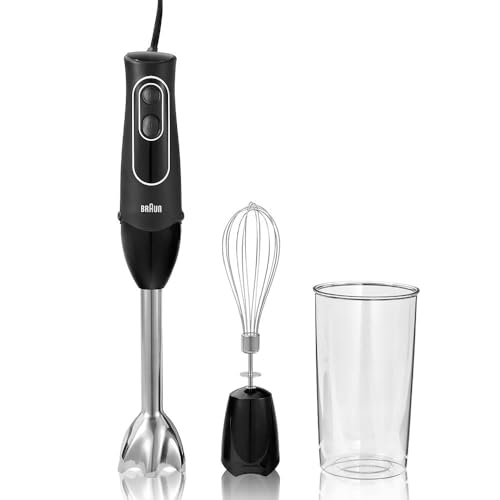
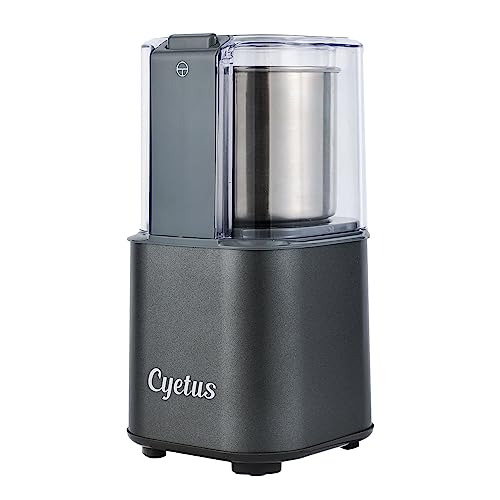
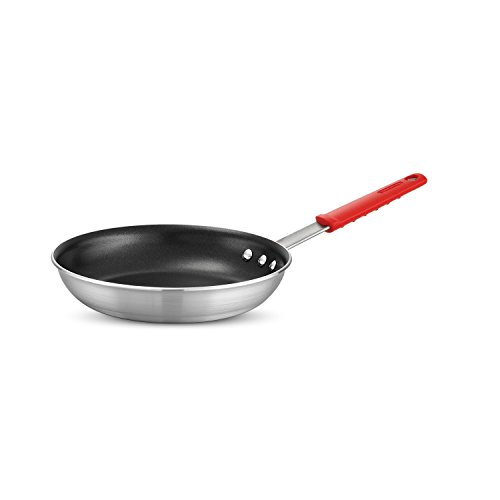
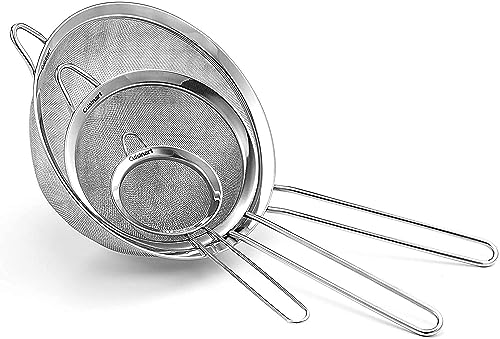



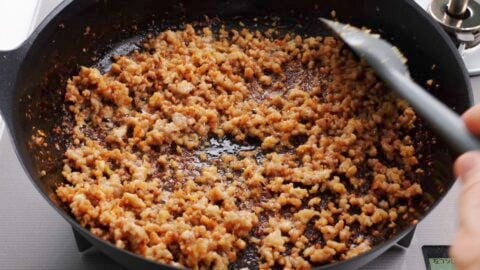
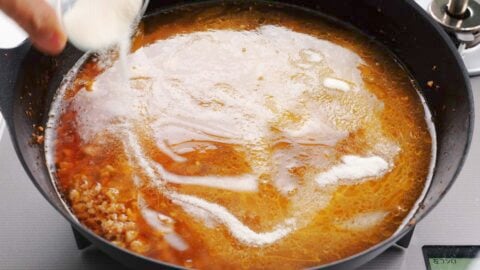

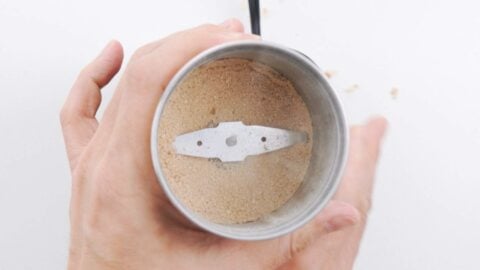

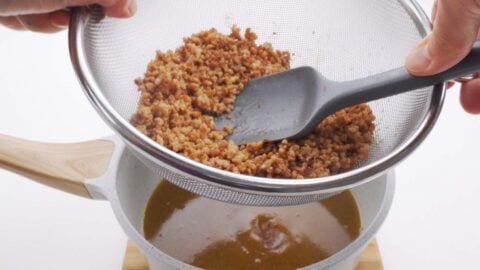

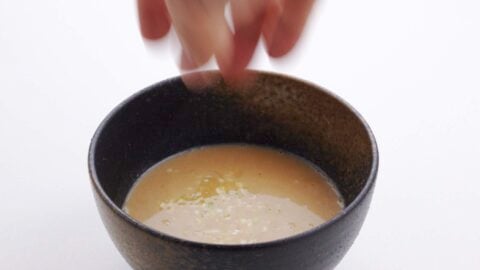
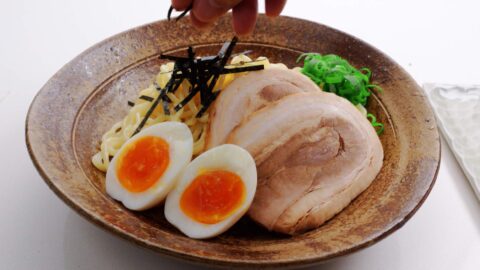
Karen says
The recipe was amazing for a time crunch! I left the cooked ground pork in the dipping sauce, and it really helped elevate the flavor. Out of all the different ramens I've made, this one takes the cake! I will try this recipe with pork belly skin (natural gelatin) when I have more time.
Marc Matsumoto says
Hi Karen I'm happy to hear you enjoyed this! I'm curious how you emulsified the broth with the ground pork still in it. Did you remove it once and add it back in? As for using pork skin, that's a great idea, but you will need to cook the broth for a lot longer to break the collagen down into gelatin.
K Stroup says
Easy, fast, and delicious! Just as promised. And this method should work for a lot of other things. Looking forward to exploring the possibilities as well as eating this frequently! Thanks, Marc!💖
Marc Matsumoto says
Thanks K! Loved your idea of using this method for gravy!
Philip W says
Looks great, but I wonder if adding some pan-roasted dried anchovies to the katsuobushi would bring a nice niboshi flavor.
Marc Matsumoto says
Hi Philip, I'm personally not a fan of niboshi in ramen which is why I didn't include it, but there is definitely a large contingent of people here that are into it. If you're into it I'd so go for it! You might want to pan-roast them first though, and depending on the size of them you may want to pinch off the stomaches (larger ones can be bitter).
Drew Liscomb says
WHAAT? YOU HAVE A RAMEN NOODLE RECIPE?!
why have you been keeping that secret. >:-(
During bowls of RAMEN EXPRESS instant noodles, I slurp through Discord servers dedicated to ramen. I have the Ivan Ramen book. but my noodles just don't come out with that *snap* that I remember. I think it's because I don't have proper kansui.
Here's hoping your recipe turns out better.
kind regards,
Drew
Marc Matsumoto says
Hi Drew, this is a very old recipe (dates back to 2010). Since moving to Japan I really haven't made my own noodles and we have lots of choices of fantastic fresh ramen noodles here. The noodles my recipe made were okay but it's a very low hydration dough and it's a little difficult to work. If you end up trying it out I hope you find it helpful. BTW I have a whole category of ramen related posts here: https://norecipes.com/recipe/type/ramen/